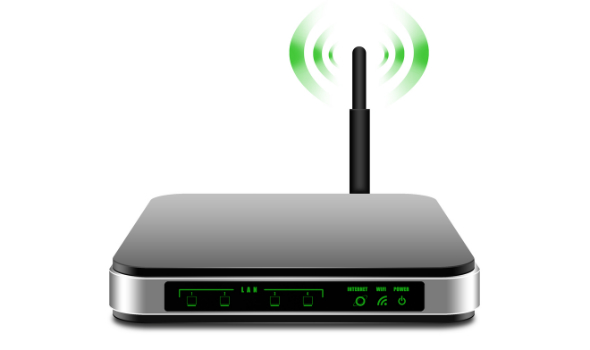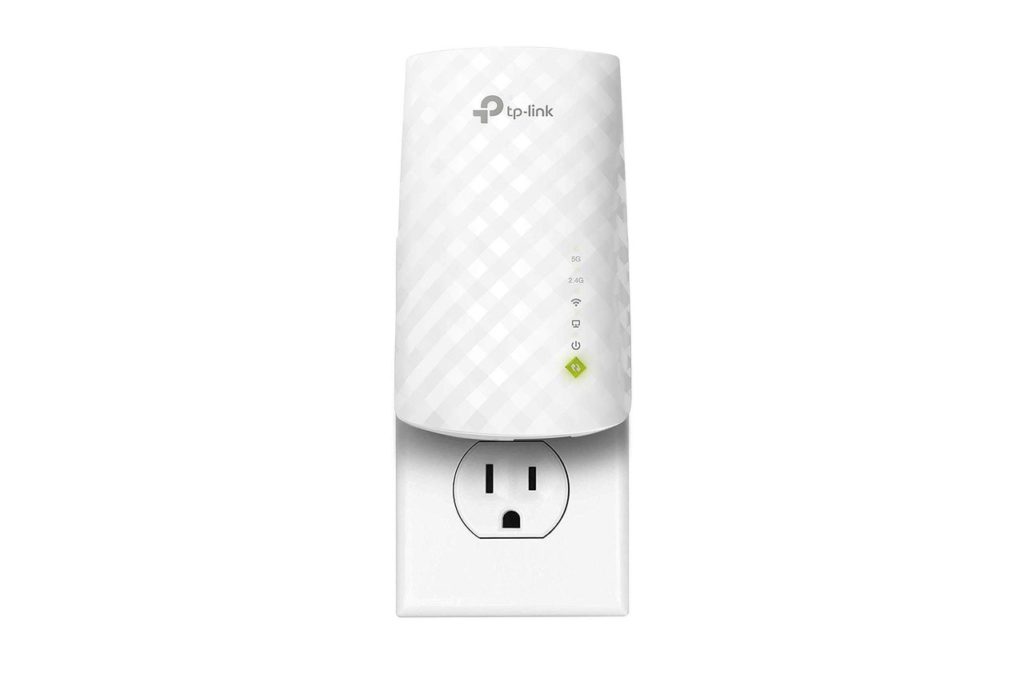The shortest possible answer is – YES, you can! You can put your router upstairs, downstairs, in the garage, attic, basement. You can place the router wherever you can provide the power and the signal. However, the best location for the router to get maximum coverage and best performance is an entirely different question.
We’re going to go on the limb here and guess that you’re wondering whether or not you can place your router upstairs because your Wi-Fi is not nearly as good upstairs as it is downstairs.
To be honest, that is totally expected in many situations. To understand why that is the case, so you can get some ideas on whether or not you should relocate your router upstairs, we need to explain how the Wi-Fi signal spreads and travels.

CONTENTS
How Does Wi-Fi Signal Travel Through Space?
Your home router most likely uses one or more omnidirectional antennas to send and receive Wi-Fi signals in the 2.5GHz or 5GHz range. Now, let’s imagine you can place the router in the middle of an open space. It would send a signal evenly in all directions creating a bubble. That bubble would reach anywhere between 150 – 300 feet from the router, depending on the make and model.
Judging from the depiction above, you could conclude that you shouldn’t have any problems getting a Wi-Fi signal anywhere in the house. But, you would be wrong. You see, there are a few characteristics of high-frequency radio waves like the one’s router uses to provide you with the wireless signal—higher the frequency, higher the speed, but easier to block.
To put it simply, a Wi-Fi router using 2,4 GHz will reach much further but provide slower internet than the one using 5 GHz.
Also, note that routers with directional antennas will provide much longer reach and higher speeds but will be easier to block with any type of material than omnidirectional antennas.
What Can Block the Wi-Fi Signal?
Many materials, appliances, and devices can significantly influence the strength and quality of Wi-Fi signals.
Brick walls, reinforced concrete, or stone walls are tough to penetrate with a Wi-Fi signal. If you’re living in a place made out of these materials, you’re in trouble because your Wi-Fi will be very unlikely to penetrate more than one wall. The same goes for materials between the floors.
However, if you’re living in a wooden frame house, your 2,4 GHz router will penetrate two walls in most cases, while the 5 GHz signal will be out of strength after penetrating the first wall.

Another thing that can significantly influence the strength, reach, and quality of your Wi-Fi signal is interference. Nowadays, many different devices use similar frequency range to operate.
For example, you’ll probably notice a much weaker Wi-Fi signal around microwave ovens, baby monitors, car alarms, wireless game controllers, or cordless telephones.
Another thing people often overlook is the fact that WI-FI is a two-way communication where the router usually has a stronger antenna than the device on the other end. So, if the router is having trouble sending a signal to you, your device is even more likely to fail in successfully sending a signal back to the router.
Where is the Optimal Place for the Router?
Theoretically, the optimal place for the router would be in the middle of the imaginary bubble you’re trying to create. It should be somewhere in the center of the house, near the ceiling or, alternatively, on the upstairs floor.
Avoid kitchen or placing the router next to known origins of signal interference. We would recommend basing your choice on where you use Wi-Fi more often and where you need a better signal. The fewer walls and other hard obstacles to penetrate with waves, the better.
Recommended reading:
- How to Setup Wi-Fi Router Without Computer?
- How to Connect ADSL Modem to Wi-Fi Router?
- Do Wi-Fi Routers Track Internet History?
However, no matter where you place the router, you’ll find out that, in many cases, especially if you’re trying to cover a bigger home with Wi-Fi or if your home is built with concrete, brick, or stone, you won’t be able to reach all corners with the usable wireless signal. What to do if that’s the case?
Let us give you a few suggestions.
How to Improve Your Home Wi-Fi Network?
An average home router can do only so much. They were never designed to cover big spaces or provide superior signal under the worst conditions. Depending on the specific situation you’re in, and how much money you are willing to spend, a few options can help.
Use Wi-Fi Extenders
If there is only a small area in the house that you can’t reach with the router, you can always extend the signal using a Wi-Fi extender. It’s an inexpensive, simple device used to receive and resend signals from and to the router.

Using them makes sense if you need only one or two. But if you’ll need a dozen of them to cover every dark spot in the house, you should search for other solutions.
Upgrade Your Router
A wireless router is a highly specialized computer. And, just like in the PC industry, new developments are rolling out at an astonishing speed. If your wireless router is five or more years old, you should consider upgrading. Every new generation of routers provides a stronger signal, better security, and higher speeds.
Create a Wi-Fi Mesh
If your home has over 3000 ft, is made of Wi-Fi unfriendly materials, or has an unusual layout, you should consider buying a couple of routers that support mesh. Mesh router systems pair two or more wireless routers in a single, seamless network you can expand as much as you need to cover even the oddest or most extensive areas.
It is a bit expensive since you’ll need multiple units, and the unit cost of a mesh router is typically higher than a standalone unit. Still, you’ll get reliable, high-speed wi-fi everywhere on your property.
Summary
Can you put the router upstairs? Yes, you can. But is it the best idea? Choosing the optimal location for the router depends on your home’s materials and nearby devices, creating significant interference for the wireless signal.
Try to place the router in the center of the area you want to cover with a Wi-Fi signal, but avoid placing it next to the microwave, baby monitor, cordless phone, or similar devices.
If that doesn’t give you a signal strong enough to cover the entire home, consider using a signal extender, upgrading the router to a model with stronger antenna or buying a couple of routers with mesh support and creating a mesh.
We hope we have helped you with your question and given you enough information to make an educated decision!

Hey, I’m Jeremy Clifford. I hold a bachelor’s degree in information systems, and I’m a certified network specialist. I worked for several internet providers in LA, San Francisco, Sacramento, and Seattle over the past 21 years.
I worked as a customer service operator, field technician, network engineer, and network specialist. During my career in networking, I’ve come across numerous modems, gateways, routers, and other networking hardware. I’ve installed network equipment, fixed it, designed and administrated networks, etc.
Networking is my passion, and I’m eager to share everything I know with you. On this website, you can read my modem and router reviews, as well as various how-to guides designed to help you solve your network problems. I want to liberate you from the fear that most users feel when they have to deal with modem and router settings.
My favorite free-time activities are gaming, movie-watching, and cooking. I also enjoy fishing, although I’m not good at it. What I’m good at is annoying David when we are fishing together. Apparently, you’re not supposed to talk or laugh while fishing – it scares the fishes.
